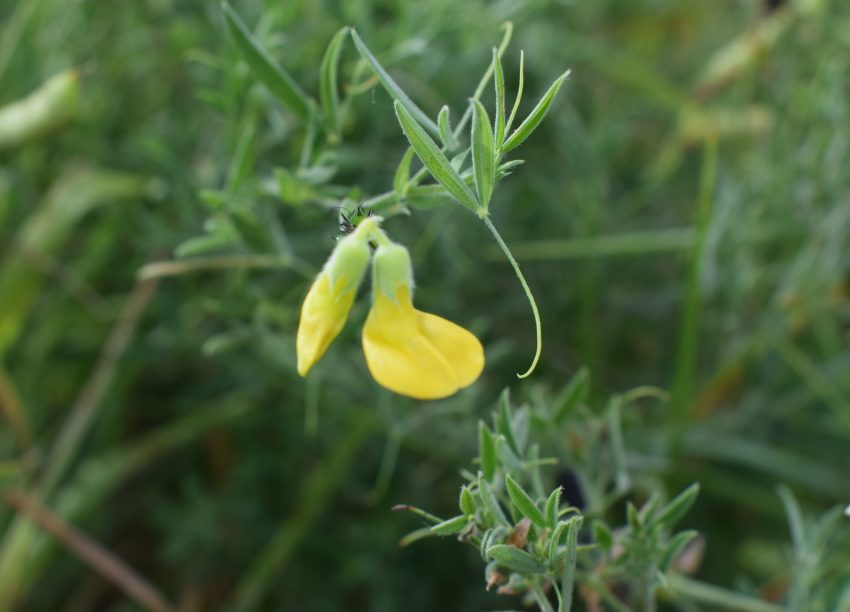Identifying Vetch and Vetchlings – Vicia, Lathyrus and others
As an amateur I have found this a scary area to unpick, but have been ticking the flowers off one at a time. These plants are part of the leguminous pea family Fabiaceae, which also includes clovers, melilots and rarities like Spiny restharrow and Sainfoin.
Vicia and Lathyrus
Broadly speaking, Vetches include Vicia and Lathyrus with a few odds along the way. I had hoped to give Vetches (mostly Vicia) and Vetchlings (mostly Lathyrus) separate pages until I realised that Bitter-vetch is a Lathyrus and gave up. Such is the world of historic versus scientific naming.
These plants often have tendrils to help them climb, leaflets (divided leaves) and pea flowers in shades of pink, purple, white and yellow (most people are familiar with Broad beans, Vicia faba, Sweet peas, Lathyrus odoratus, and Edible peas, Pisum sativum).
Wild vetches and vetchlings
Wild vetches and vetchlings I have encountered include Meadow vetchling, Lathyrus pratensis; Tufted vetch, Vicia cracca, and Broad-leaved everlasting pea, Lathyrus latifolius.
Meadow vetchling – Lathyrus pratensis
The pea shown below is one I have ID’d as Meadow vetchling, Lathyrus pratensis, spotted at Reculver. As usual, if it’s something I haven’t identified before, I check out my copy of Rose. It has to be a vetch or a vetchling because it has tendrils. Looking through the book, the only yellow pea flowers with tendrils as well as leaflets in pairs is Meadow vetchling.
I was concerned that the book says the flowers are held in clusters of 5 to 12, so briefly looked at other IDs for smaller numbers of flowers – the only thing I found was Lathyrus aphaca, Yellow vetchling, but the leaves were nothing like that. Going back through my photos from the day I found another pic showing more of the leaves, and one flower head containing five pea flowers. The second pic also shows long flower stems.
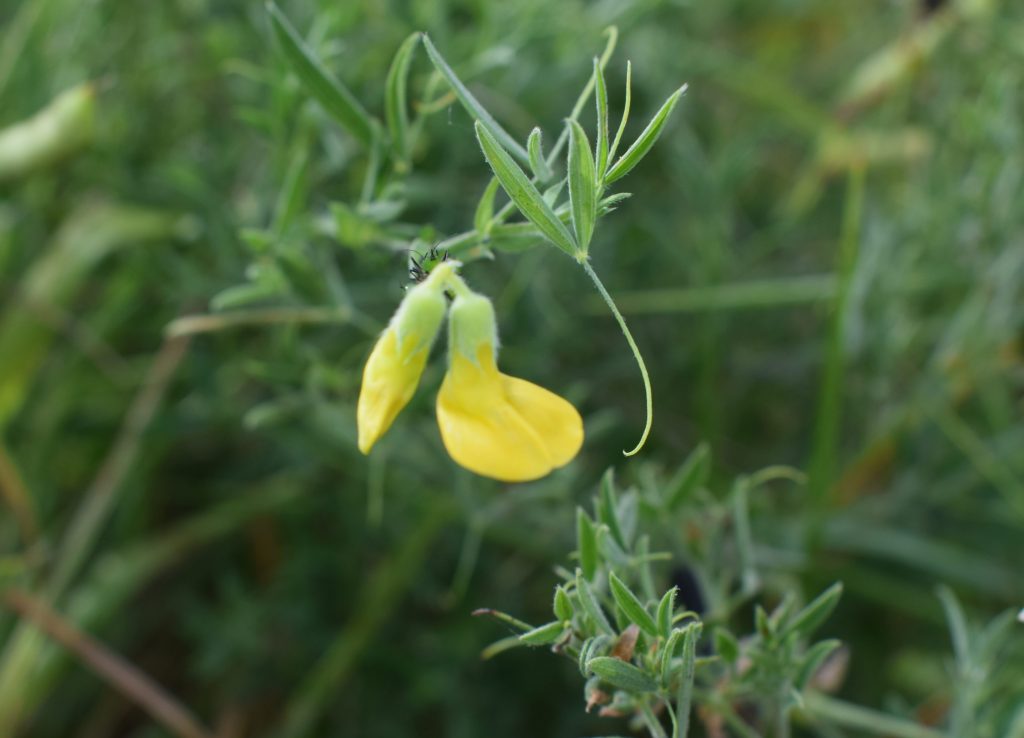
I think the leaflet shape (lanceolate, meaning long, narrow and tapering) combined combined with tendrils is quite distinctive. For additional reassurance there are visibly parallel leaf veins, and 1cm long arrow shaped leafy stipules (piece of plant that sticks out at a leaf joint).
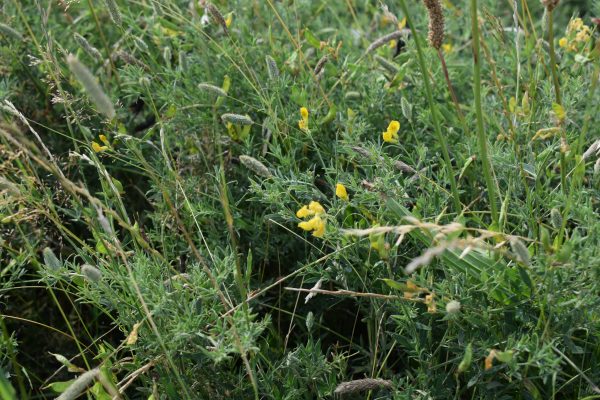
Grass vetchling – Lathyrus nissolia
I found that Grass vetchling is easy to spot in that the individual flowers are about 1cm across and magenta pink – they certainly grabbed my attention when I found them locally in 2022. I thought that they were quite hard to photograph and it was tempting to bring some home to lay out on white paper where they wouldn’t move! The flower stalk resembles grass, and if you look closely you can see the stems camouflaged amongst the long grass.
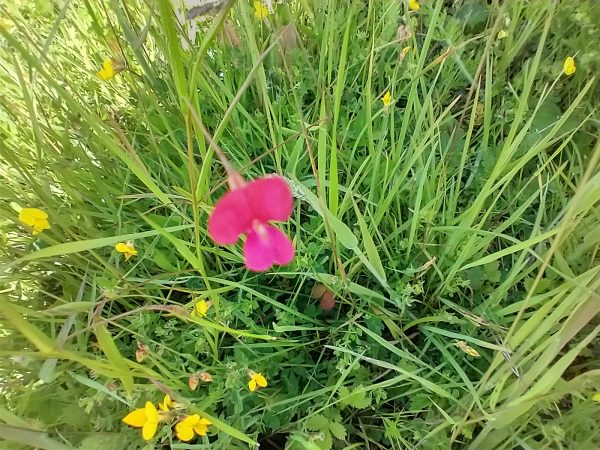
The upright plant grows to about 30cm high, and unlike most other peas, the leaf is not divided into leaflets. There are no tendrils.
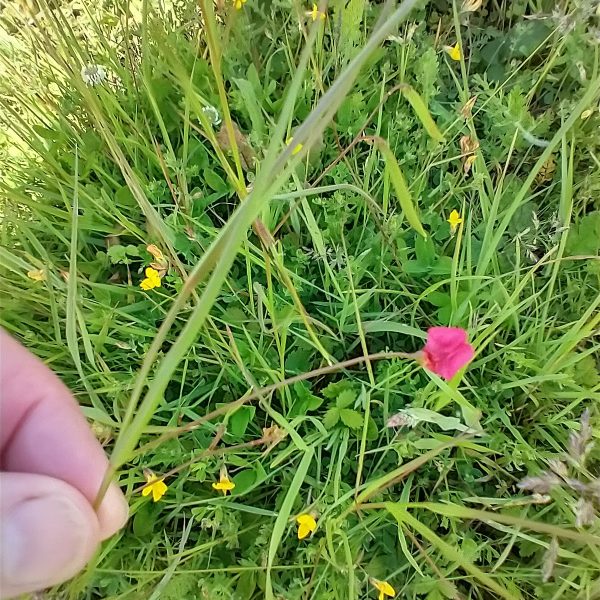
I noticed that the faded flowers had turned a creamy white colour.
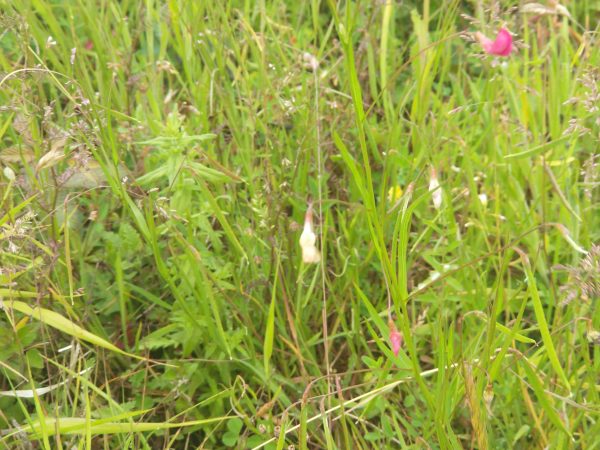
I found some seed pods which were a few millimetres across and up to about 5cm long.
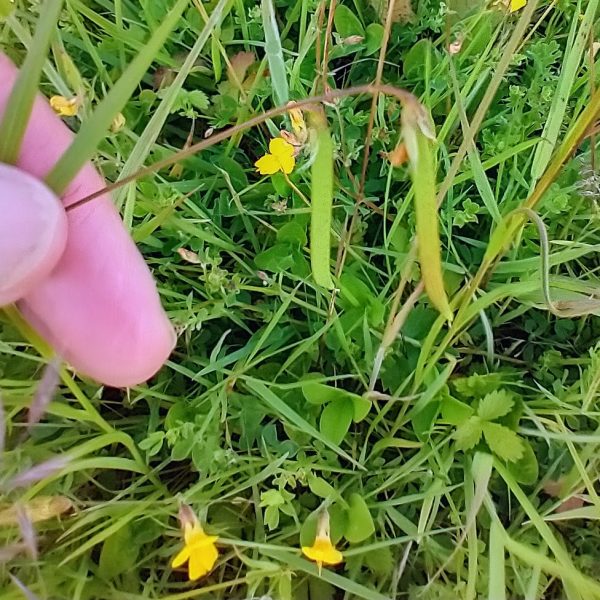
Tufted vetch – Vicia cracca
I spotted this Tufted vetch, Vicia cracca, by the river Stour near Canterbury in Kent. As far as I know Tufted vetch and Fodder vetch are the only two purple (as opposed to pink) vetches with tendrils which have long racemes (spikes) of flowers.

The image below shows a local habitat of Tufted vetch on Seaford Head where it grows in longish grass on chalk.
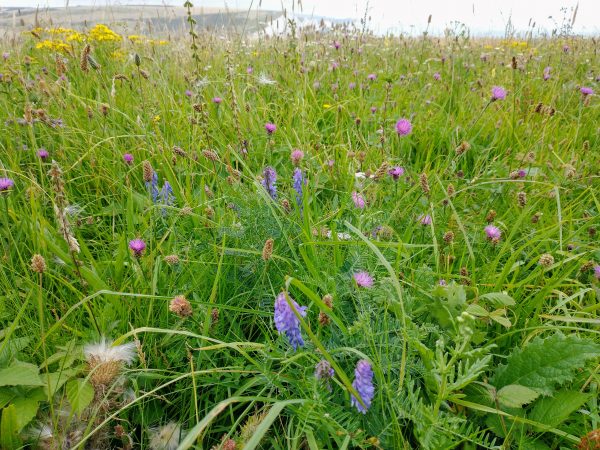
The image below shows a bit more about the foliage which is grey-green. Each leaf is divided into 6 to 10 pairs of leaflets with a branched tendril at the leaf tip. The leaves are smaller and more delicate than Common Vetch.
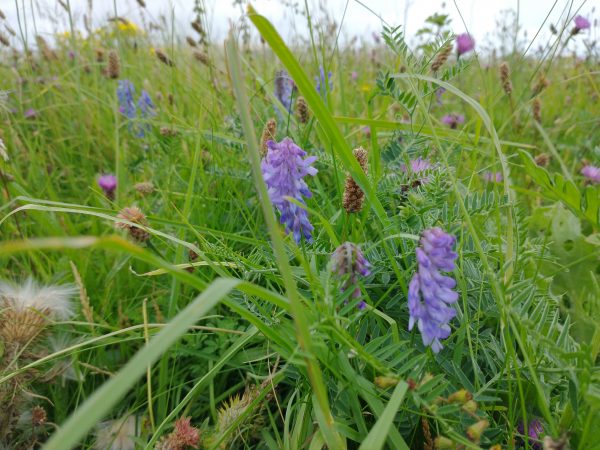
The violet flowers are held on one side of the stem, not all the way round.
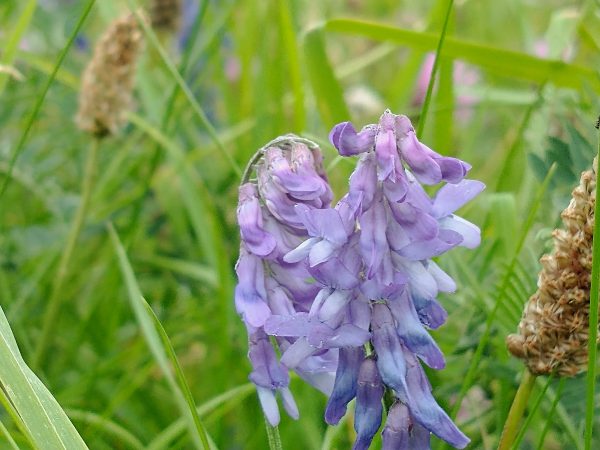
Fodder vetch – Vicia villosa
I had initially identified this legume as Tufted vetch in a field on the outskirts of Seaford. But as I write this page, I am noticing that the flowers are broader and more blousy-looking than tufted vetch and have white tips. I’m therefore assigning it as Fodder vetch, which is consistent with the presence of Sainfoin and the idea that this field has been sown by the farmer with a pollen rich wildflower mix.
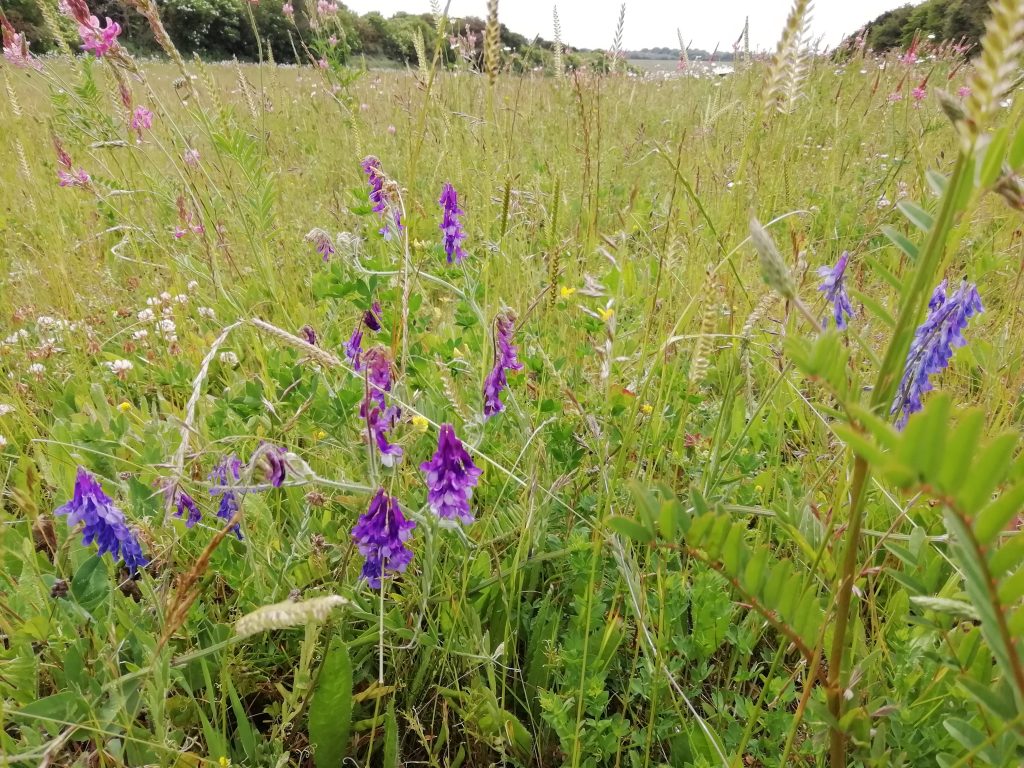
Common vetch – Vicia sativa
Common vetch is larger and more substantial looking than the flowers talked about above. Its height was 30cm plus and leaflets being about one centimetre across and a few centimetres long. The flowers were 1cm to 2cm across, which is larger than everything listed already on this page. Although not easy to spot in the pic, it does have tendrils (disappearing out of shot top left).
I identified it as Vicia sativa due to the following features: one to three pink flowers in the leaf joint; the leaflets have a needle point; the leaflets halfway along the stem are larger than the ones nearer the top or bottom. The last two features mentioned separate it in theory from Bush vetch, Vicia sepium which I have yet to photograph.
The photo below was taken while on holiday at Rye Harbour.
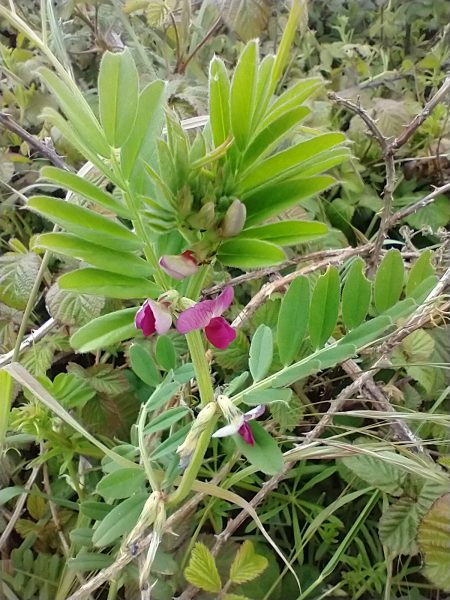
Tares – small flowered peas
I recently came across two Vicias locally with tiny lavender grey flowers.
Hairy Tare – Vicia hirsuta
The little flowers are only a few millimetres long and are held in clusters of 1 to 9. The small leaflet pairs are in groups of 4 to 9. The whole plant was up to about 30cm tall and growing in rough grass alongside Grass vetchling, Smooth tare and Bird’s foot trefoil.
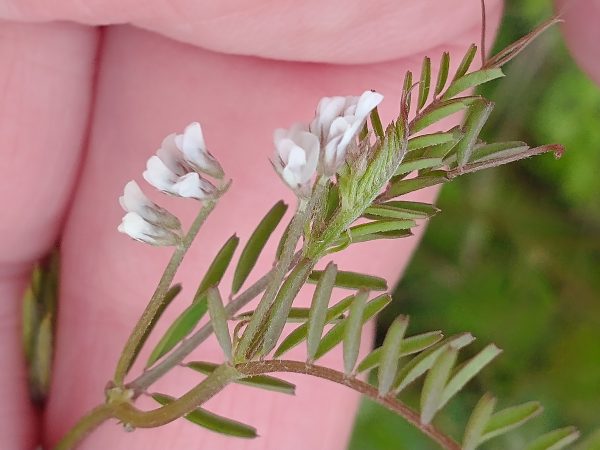
The seed pods are small, only a couple of centimetres long, containing only two seeds, and very hairy.
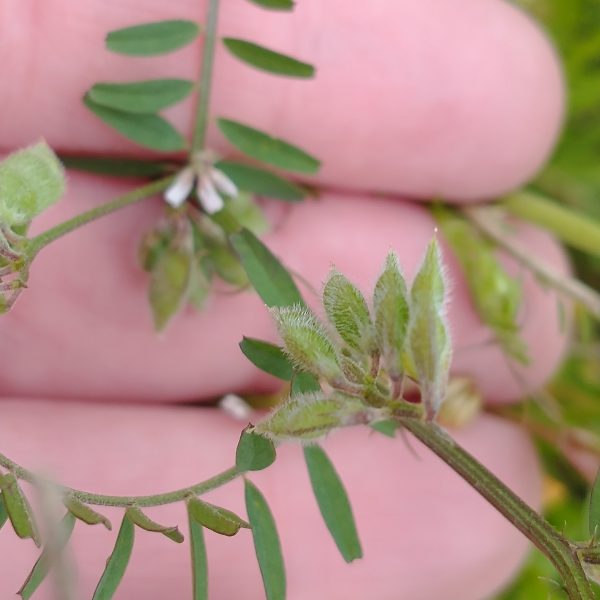
Smooth tare – Vicia tetrasperma
This more delicate pea was shorter and more elegant than the Vicia above. he whole plant was about 20cm high. The flowers were only held in ones and twos but were about twice the size of the ones above. The leaflet pairs were in groups of three to six.
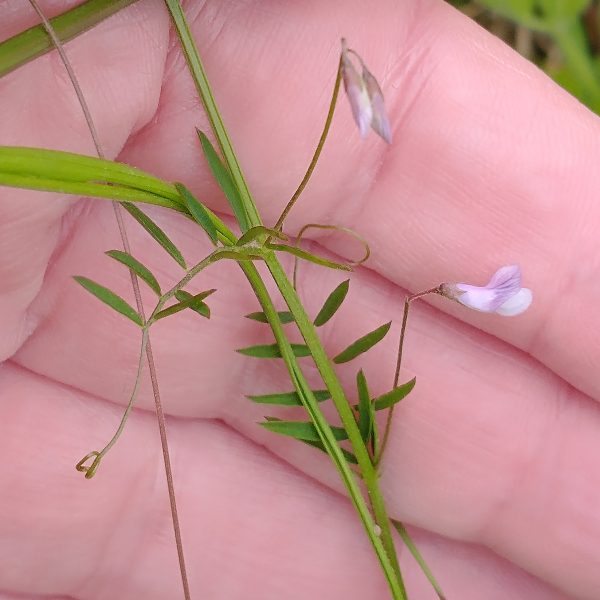
I didn’t see any seed pods when I found them in June, but apparently they are long and thin, holding four seeds, hence the Latin name.
Perennial peas
Broad-leaved everlasting pea – Lathyrus latifolius
I am very familiar with this flower as it grows in the garden of my Victorian terrace. Being perennial, vigorous, naturally large flowered and long-flowering, I can see how it became popular with gardeners. Mine at home climbs to over 2m and self-seeds readily. Although it looks like a sweet pea, these have no fragrance that I can discern.
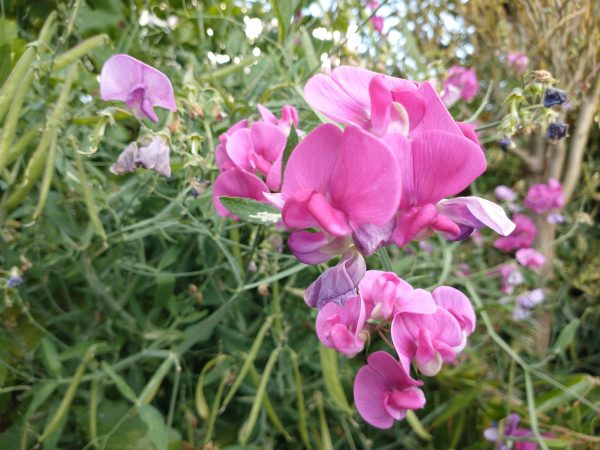
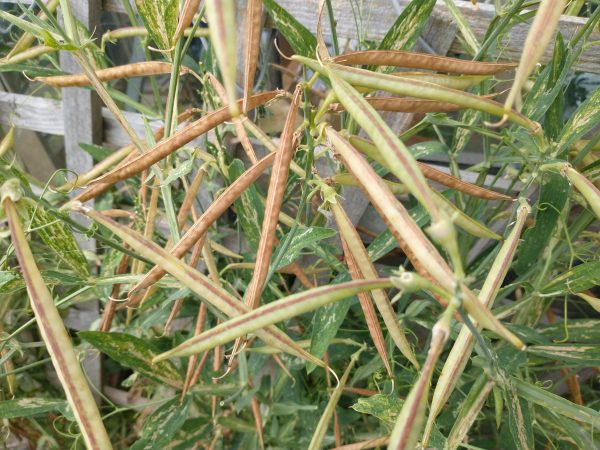
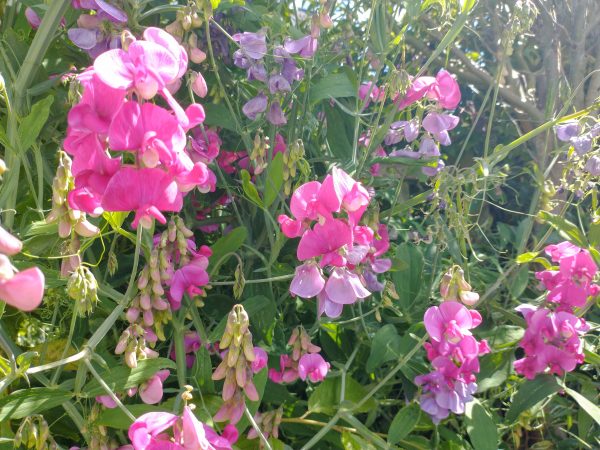
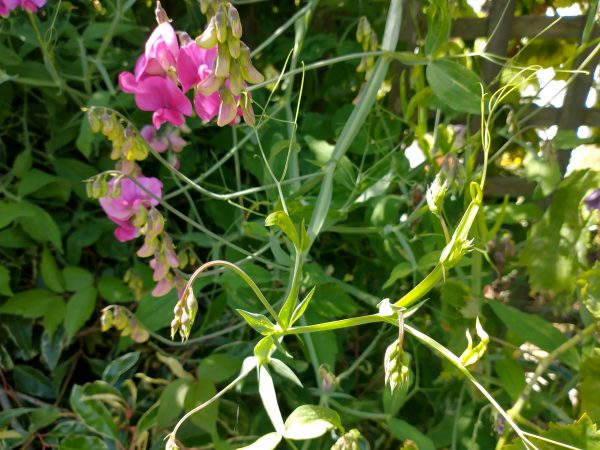
The large dark pink flowers are each 15mm to 30mm long, with five or more on a stem which fade to white with age. Even from this soft-focus image taken at Reculver, you can see that the stems are substantial and broad-edged. This means that the bloom can be easily separated from the similar Lathyrus grandiflorus, which has fewer flowers per stem.
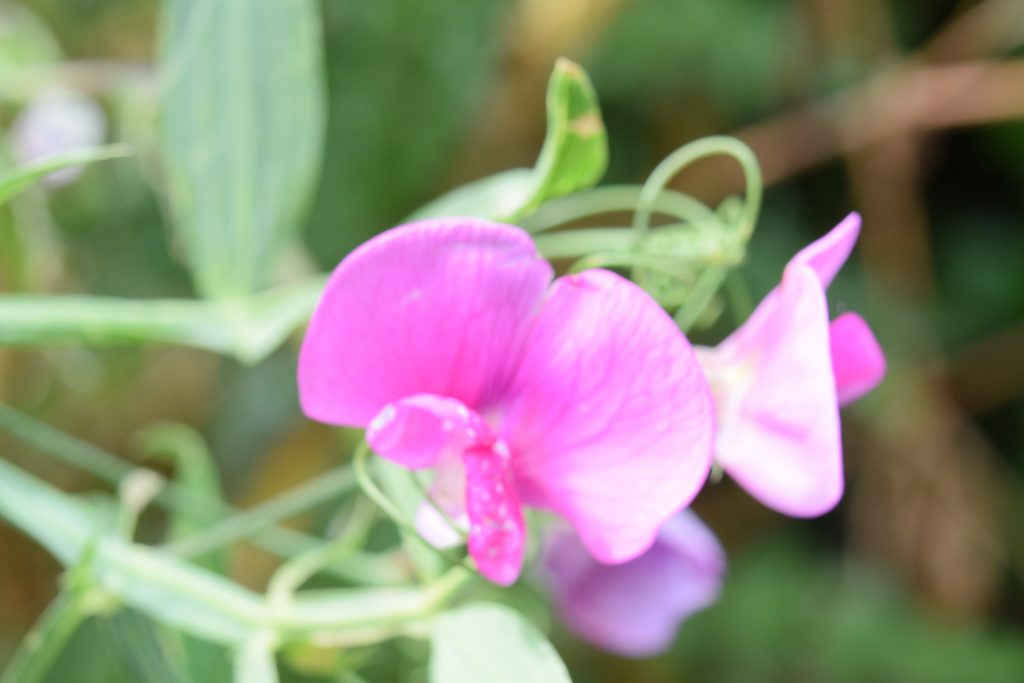
Two flowered everlasting pea – Lathyrus grandiflorus
This Pea spotted in Derbyshire has much more delicate looking foliage than the one above and larger flowers. Each flower has a gradation in colour from burgundy at the bottom to pale pink at the top.
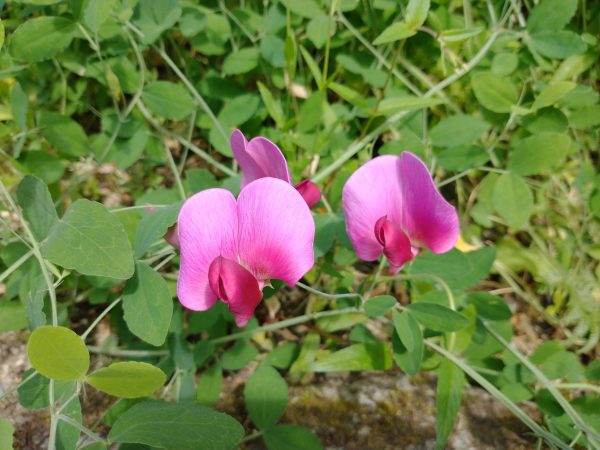
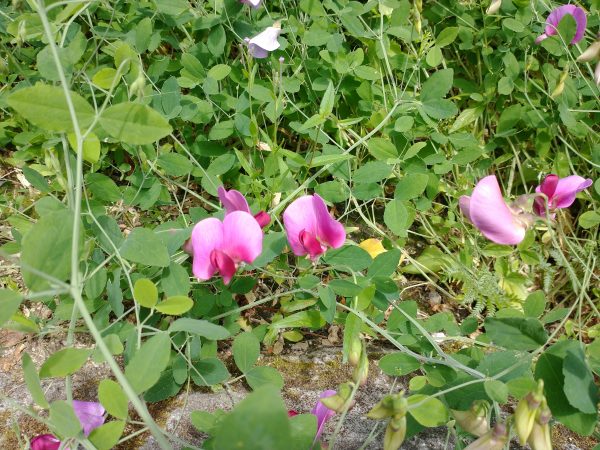
Blog posts mentioning Vetch and Vetchling, Vicia and Lathyrus are tagged accordingly, e.g. https://photographingwildflowers.co.uk/tag/vetch/
or https://photographingwildflowers.co.uk/tag/vicia/
Kidney vetch, Anthyllis vulneraria, has it’s own page.
Other odds and ends include Horseshoe vetch, Hippocrepis comosa and Crown vetch, Securigera / Coronilla varia, which I will list as I come across them.

